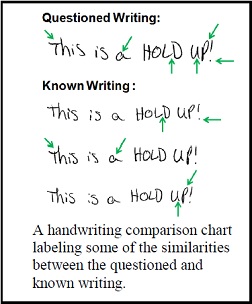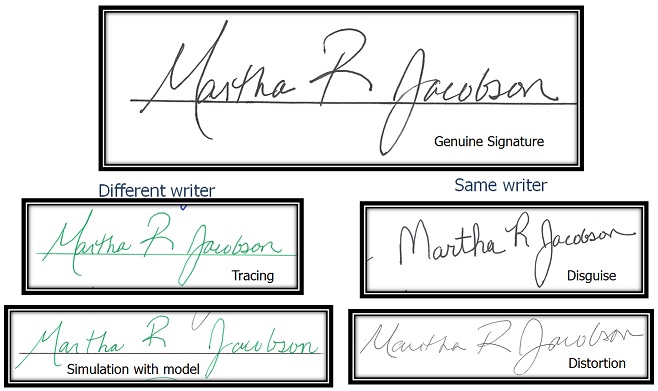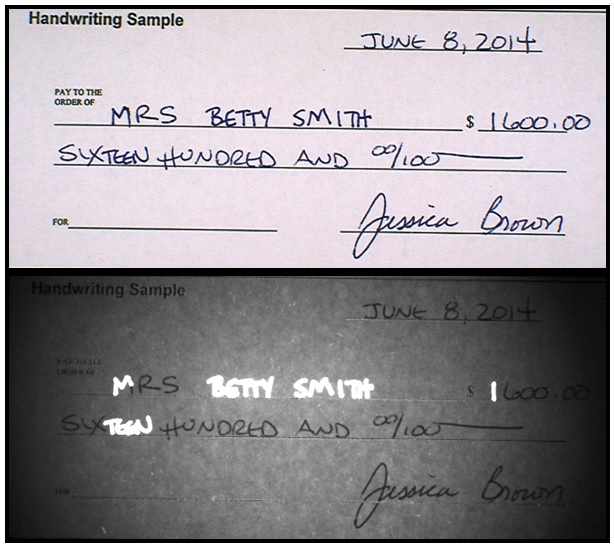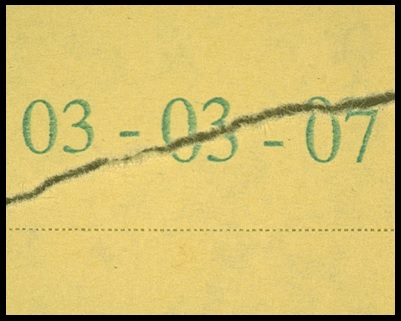
The Document Unit for the Indiana State Police is located at the Indianapolis Regional Laboratory and provides forensic examinations of documentary evidence collected in criminal cases throughout the State. The Unit provides a range of examinations in order to answer questions about the authorship, authenticity, and background of documents.
Document examinations may include, but are not limited to:
- the comparison of handwriting, hand printing, and signatures to known writing;
- the development and decipherment of indented writing impressions;
- physical match examinations of torn, cut, or shredded documents;
- the classification and comparison of inks and writing instrument;
- the examination of printing processes to determine source or authenticity;
- detection of alterations, additions, deletions, or substitutions;
- decipherments of altered, erased, obliterated, charred, or water-soaked documents; and
- the determination of the sequence of events in the creation of a document.
Examiners within the Forensic Document Unit follow established standards in examinations and reporting results; provide expert testimony when required; and provide training on specialized topics (based on request and availability). We welcome inquires.
Additional information about the types of examinations, documentary evidence packaging and submission, and collection known writing (exemplars) can be found in Physical Evidence Bulletin 16: Submission of Documentary Evidence.
The chart below shows a genuine signature, a tracing; an attempt to simulate; a disguised signature, and a distortion.

These images below show a check raised from $600 to $1600 using two different writing instruments. The top image shows how the check looks under normal lighting, and the lower image shows what the check looks like under an alternate light source.

An image of a torn piece of paper suitable for a physical match.

FAQ:
What is a questioned document?
A document is anything that bears marks or symbols to convey a message. A questioned document is a document that has some unknown element, such as who was the writer, how was it produced, is it genuine, or has it been altered from its original condition.
What is a Forensic Document Examiner?
A properly trained individual who resolves questioned document problems through examination and instrumental analysis. They examine questioned documents, conduct comparisons to known material to determine authenticity and/or origin, and testify as an expert in court proceedings.
Can photocopies of evidence be submitted or does the lab require original evidence?
The submission of original documentary evidence is preferable over the submission of copies. The customer should make every effort to locate the original evidence.
However, the inability to obtain the original evidence should not prevent the submission of copies for examination. The FDU will examine the best evidence available. A first generation copy or an original scan (whichever was collected) is the best evidence when the original is not available. It should be kept in mind that the examiner’s opinions may be limited by the quality of the copy submitted. Additionally, certain examinations can only be conducted on original documents, such as indented impression, ink, and printing process examinations.
Can a document also be examined for latent prints and DNA?
Yes, but it is highly recommended that documentary evidence be submitted to the Forensic Document Unit for examination prior to being examined for latent prints or DNA. Certain evidence may be destroyed if the document is treated for latent prints or examined for biological substances before a document examination is performed.
What kind of known writing should be obtained?
The two types of known writing that should be collected from a subject are non-request known writing and request known writing. Non-request known writing is writing an individual produces during the normal course of business and through personal correspondence that is then collected during the investigation. Request known writing is collected from a subject in front of an investigating officer and includes the ISP Handwriting Exemplar Form and supplemental pages of writing duplicating the questioned document. It is highly recommended to collect and submit both types of known writing from each subject.
What can be done if a subject is not writing naturally in an exemplar session?
Detailed information about disguised writing can be found within PEB 16: Submission of Documentary Evidence. There are methods that can be employed within the exemplar session and non-request known writing should also be collected.
Should known writing from a victim be obtained and submitted for comparison?
Yes. It is always recommended to collect known writing from a victim as well as the suspect. For example, if the suspect cannot be identified or eliminated as the writer of the questioned writing, we may be able to offer an opinion on whether or not the victim was the writer.
What if a subject is not available to provide request known writing?
Non-request known writing may be collected and submitted for comparison if a subject is not available, such as being deceased or out of state. A list of sources of non-request known writing can be found at the following link.
There is no handwriting on a document. What other examinations can be conducted on a document by the Forensic Document Unit?
A document can be examined for indented impressions, the printing process and inks can be evaluated and compared, examined for the presence of alterations, and compared to known materials to determine if the they are from a common source.
What are indented impressions?
Indented impressions form when two or more sheets of paper are stacked together and the writing executed on the top sheet leaves indentations on the sheets below. This indented writing may be visualized with side lighting or developed by using an electrostatic detection device. Indented impressions can provide investigative information, associate an individual to a document, associate a document to another document, date a document, determine production sequence, visualize an alteration, or provide other evidence significant to the source or creation of the document(s).
How do I package and submit documentary evidence?
Information about packaging and submission can be found in two Physical Evidence Bulletins: PEB 16: Submission of Documentary Evidence and PEB 20: Evidence Packaging and Submission Guidelines.
What information is needed on the Request for Laboratory Examination form?
Detailed information about what information should be included on this form can be found within PEB 16: Submission of Documentary Evidence. One of the most important pieces of information to include on this form is if there is a court date set for the case.
How long does it take to work a case and receive the results?
Turnaround time can vary greatly depending on the size and complexity of a case, the number of other cases in currently in the backlog, and the court schedules of the examiners. Feel free to call the Forensic Document Unit for a current estimate of turnaround time.
What number do I call if I have questions about a document case?
The Forensic Document Unit can be reached at 317.921.5300 or at 866.855.2840. Ask the operator to transfer you to a member of the Forensic Document Unit.
